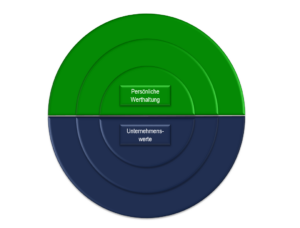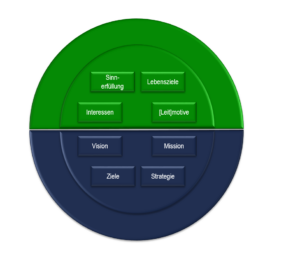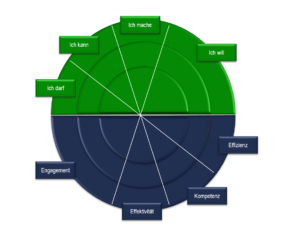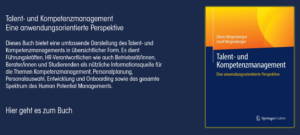Oliver Wegenberger
Excerpt from the book "Talent and Competency Management: An Application-Oriented Perspective"
The company/employee relationship is a much-lit topic. If you look back a few decades, opposites were often dominant. Thus, in the discussion about the relationship between employees and companies, the separative was sometimes placed before the common. However, the relationship between companies and employees is not one of opposites, but is based on a great deal in common. This is reflected, among other things, in the use of language since the beginning of the 21st century. This change is moving toward open and networked systems instead of closed ones. Terms such as "networking," "integration," "collaboration," "[knowledge] exchange," knowledge sharing, "open sources," "cloud," "win-win situation," etc. are increasingly becoming a matter of course.
Let's take a look at the company/employee relationship on 3 levels
- Level 1: Values | Attitude | Guiding principles | Vision
- Level 2: Goals | Attitude | Behavioral orientation
- Level 3: Management | Competence | Implementation | Impact
You can imagine the levels as concentric circles. The halves of the respective circles represent the employee or company side.
On level 1, the employee's personal values and the company's values are anchored in the corporate philosophy and principles. If the corporate values correspond to a high degree with the personal values, this enables a high level of identification and strengthens commitment and the "psychological contract.

Figure taken from Wegenberger & Wegenberger (2021)
Level 2 contains strategic goals on the company side and attitudes and [behavioral] orientations on the employee side. What interests and guiding principles are on the employee side, vision, mission and strategy are on the company side. Ideally, the vision, mission and goals of the company coincide with the interests and goals of the employees. This is of central importance for identification and thus for the psychological contract.

Figure taken from Wegenberger & Wegenberger (2021)
Level 3: A company can only be successful in the long term if it is
- Effectiveness ["doing the right thing"],
- Efficiency ["doing the right thing, the right way"],
- Commitment [of all organizational members], and
- Competencies [competencies relevant to the company]
are ensured.
These factors are reflected on the employee side in the following attitudinal and behavioral elements:
- "I will" [commitment]
- "I can" [competence]
- "I do" [effectiveness - "doing the right thing"]
- "I may" [efficiency - framework conditions to "do the right thing" exist].

Figure taken from Wegenberger & Wegenberger (2021)
With regard to the company/employee relationship, it can be summarized that the goal is to develop the organization into an effective and efficient organization in which employees find framework conditions where they can contribute their competencies in a committed manner.
For more on the corporate/employee relationship - as well as advice for day-to-day talent management work - see the book "Talent and Competency Management: An Application-Oriented Perspective".
Source
Wegenberger, O., & Wegenberger, J. (2021). Talent and competence management: an application-oriented perspective. Springer Gabler.
Image source
Freepik




